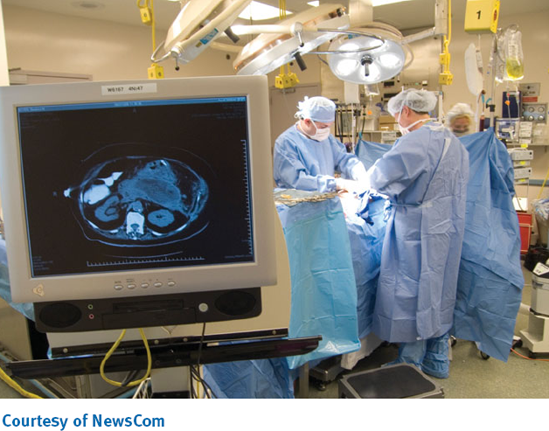Chapter 4. OPERATIONAL AMPLIFIERS

THE LEARNING GOALS FOR THIS CHAPTER ARE:
Learn how to model the op-amp device
Learn how to analyze a variety of circuits that employ op-amps
Understand the use of op-amps in a number of practical applications
Robotic Surgery Robotic-assisted surgery may well be the most significant story in medical circles since the Jarvik artificial heart hit the headlines years ago. Using small surgical cuts, this minimally invasive procedure leads to faster recovery and less pain, bleeding, and risk of infection. You can expect to leave the hospital after an overnight stay and walk within a day following kidney or bladder removal, once considered major surgeries. Robotic-assisted techniques have even been extended to certain heart surgeries.
Robotics allows surgeons to work at a console only a few feet away from the operating table, remotely manipulating robotic arms at the bedside. The primary advantage is reducing the impact of hand tremors on surgical instruments. Combining computers and robotics also lets surgeons run practice sessions beforehand on computer simulations, further increasing their accuracy in a field where precision is literally a matter of life or death.
In this chapter, you will study the operational amplifier, or op-amp, a key building block in robotics. Nodal analysis and Ohm's law are all that you need to analyze this basic electronic component. ...
Get Engineering Circuit Analysis: International Student Version, Tenth Edition now with the O’Reilly learning platform.
O’Reilly members experience books, live events, courses curated by job role, and more from O’Reilly and nearly 200 top publishers.

